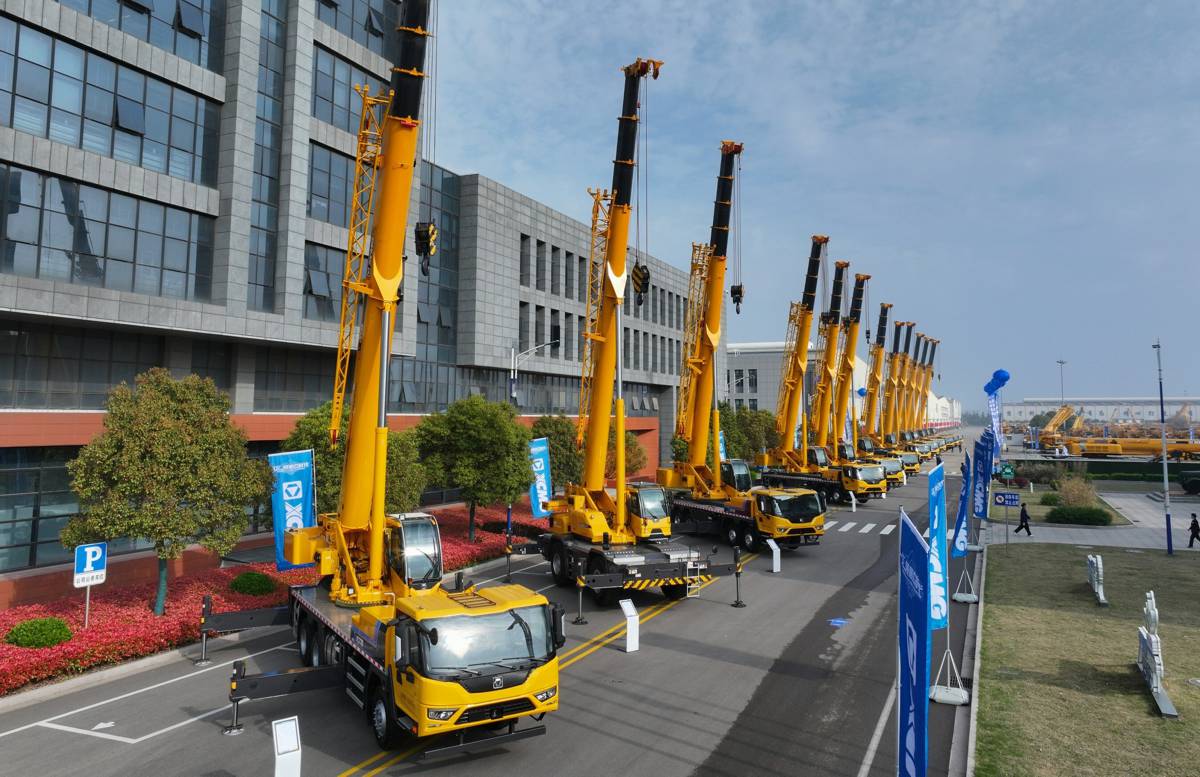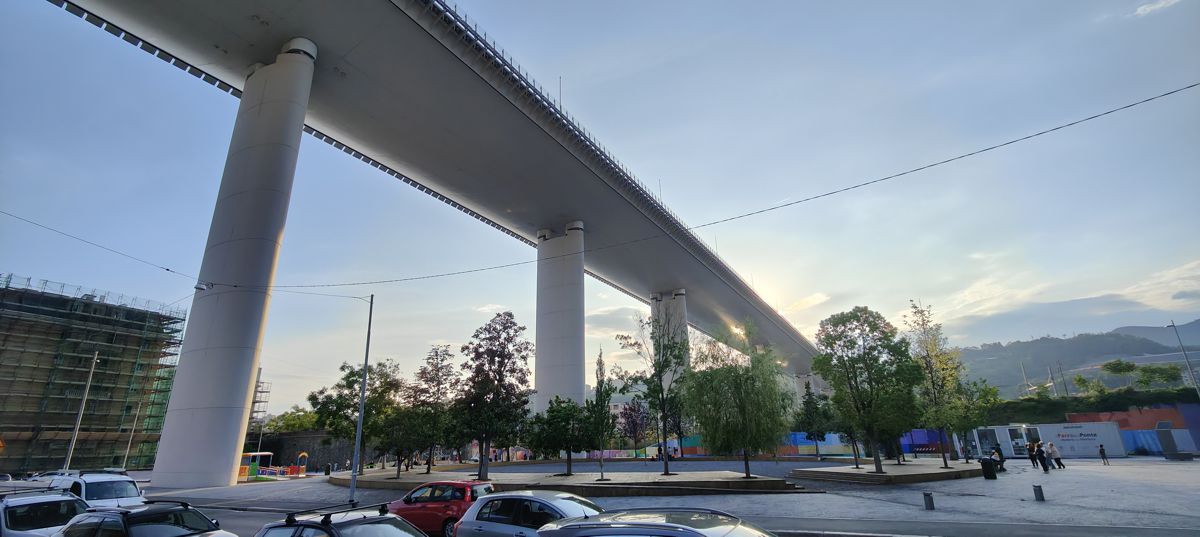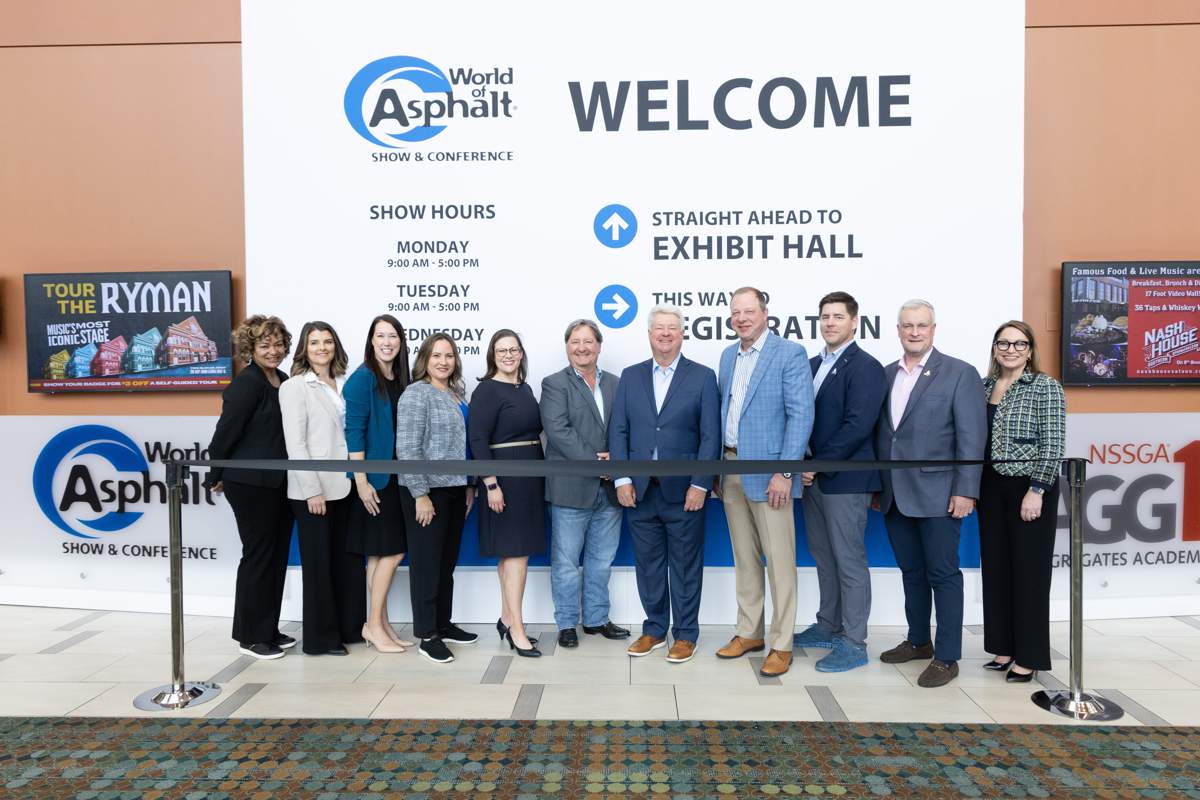Paving and compacting with low temperature, low emissions asphalt
The paving of a road tunnel under the Kriegstrasse in Karlsruhe was carried out under stringent constraints.
To reduce emissions, the contractor was required to use machines with diesel particulate filters and low-temperature asphalts. Using pavers from VÖGELE and rollers from HAMM, the “Tunnel Kriegsstrasse” consortium comprising the Schleith and Züblin construction companies was able to meet the requirements, laying the mix efficiently and to a high quality standard.
Machines from VÖGELE and HAMM lay pavement with asphalt at reduced temperature
The area around the Kriegsstrasse in downtown Karlsruhe is undergoing a complete redesign, which began in 2019. Where there was previously a wide through-road, there will in future be an extensive pedestrian space, a landscaped streetcar line, and avenues of trees with bike paths. A subway line is also being built, with through auto traffic being rerouted into a mile-long tunnel, featuring two tubes in widths of 17.4 and 22.3 feet respectively.
The commissioning client KASIG (Karlsruher Schieneninfrastruktur-Gesellschaft mbH) stressed the demand to protect the paving crews, requiring that only rollers and pavers equipped with diesel particulate filters be allowed to work in it. It also stipulated the use of low-temperature asphalts (LTAs).
They are paved at temperatures around 86°F less than hot asphalts, so they greatly reduce the exposure of the paving crew to fumes, emissions, and heat. The expert view is that LTAs are also highly resistant to deformation. That’s especially beneficial on busy roads like the Karlsruhe auto tunnel.
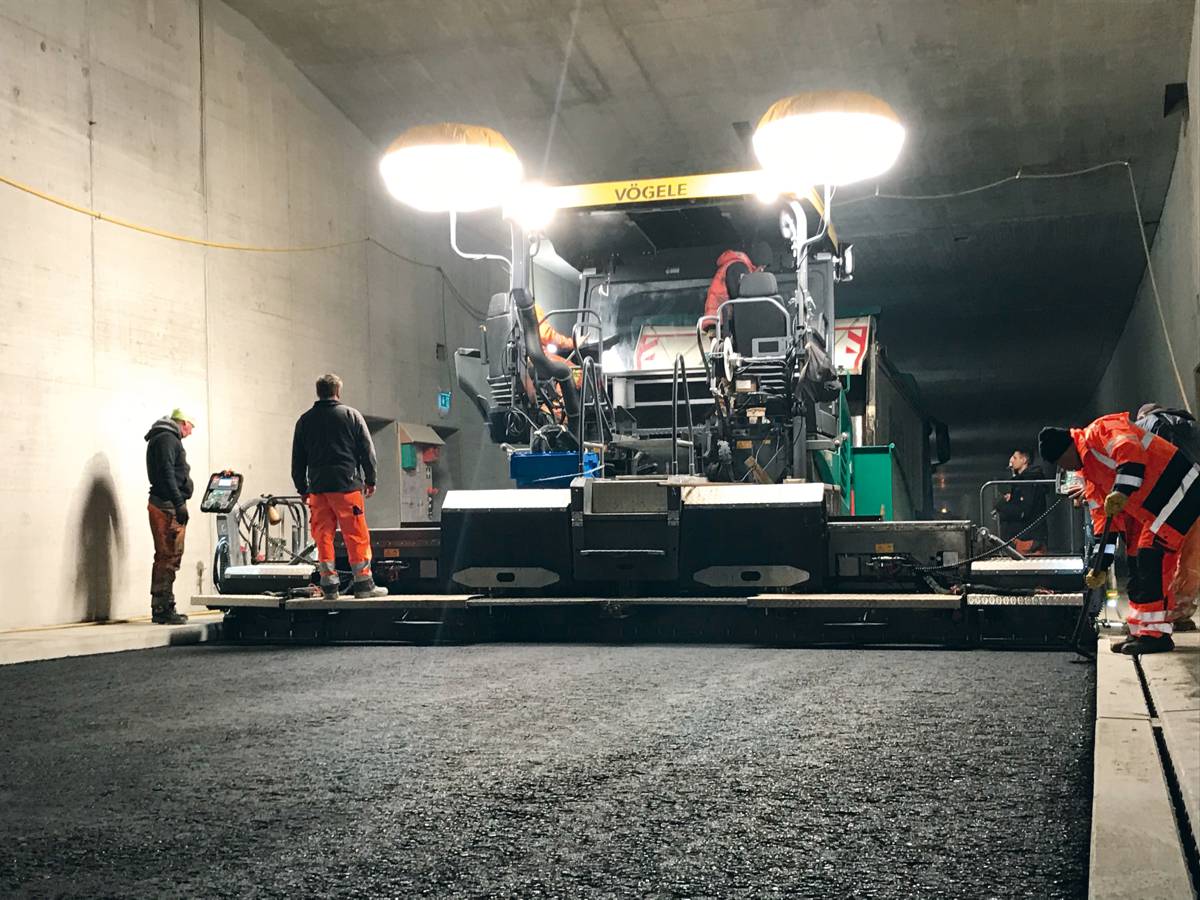
Short time window for paving and compaction
The processing of LTAs does pose some challenges though. On the Karlsruhe project, special waxes were used to make sure the mix could be compacted even at lower temperatures. But LTAs solidify rapidly when their temperature falls below a critical level. So the mix had to be laid and compacted as quickly as possible, in one uninterrupted pass.
The contractor, Martin Paschmann Asphaltbau GmbH, used two VÖGELE SUPER 1800-3i pavers and three HAMM rollers: a DV+ 90i VT-S combination roller, a DV+ 70i VV-S tandem roller, and an HD 14i VO compact roller.
Efficient, powerful pavers needed
So as to allow the rollers as much compaction time as possible, every aspect of the job had to be closely coordinated. The key factors were consistent transportation of the mix, together with efficient continuous paving. This was where the SUPER 1800-3i pavers were able to show their strengths: With their powerful yet delicate material conveying and distribution, they achieve high paving capacities, and are able to lay even low-temperature asphalt in high quality.
One of their key components is VÖGELE’s patented heated auger frame. It is located on VÖGELE pavers where the material falls onto the auger and is spread across the road. The surface of the frame is heated uniformly, so not even low-temperature asphalt will stick to it. The electric screed heating also ensures that the other components coming into contact with the material – screed plates and compacting systems – are heated consistently. That guarantees a uniform surface structure, as well as reducing contamination of machine components.
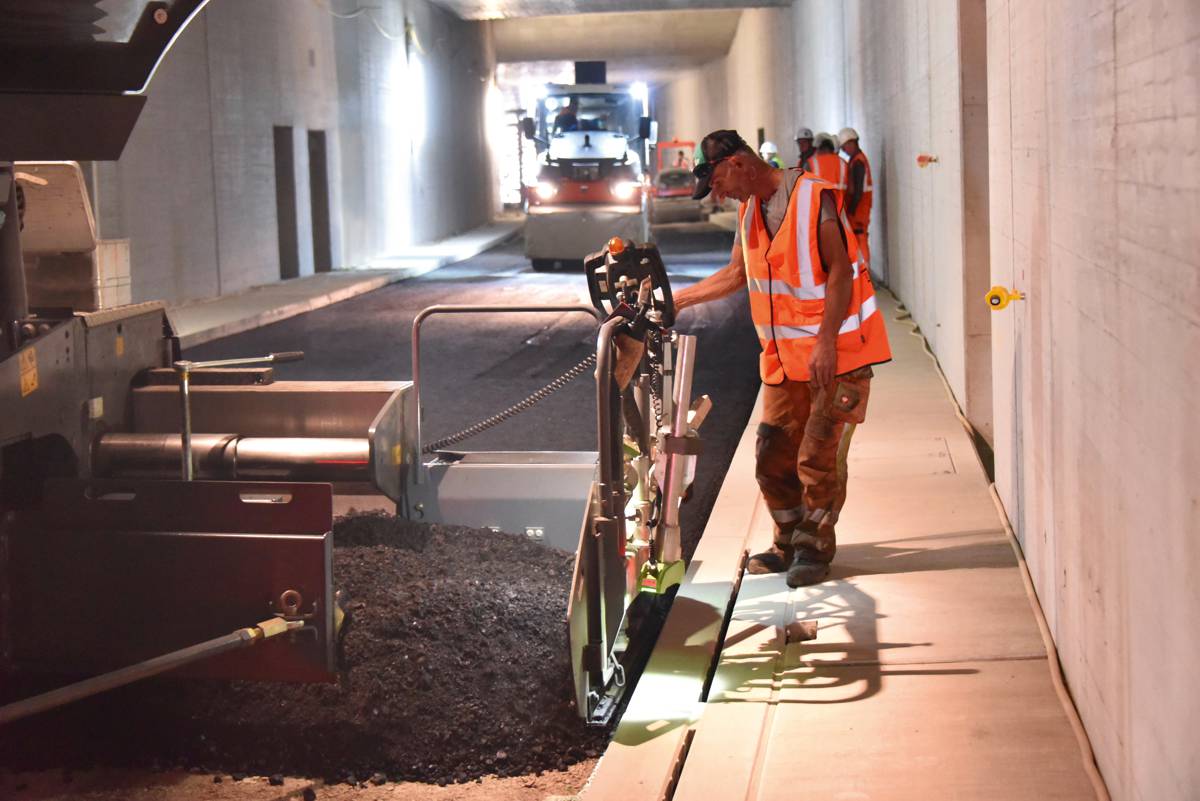
High degree of precompaction and automatic functions save time
Apart from neat, precise paving, precompaction is also crucial. The AB 500 and AB 600 extending screeds were deployed on the Karlsruhe auto tunnel, both equipped with tamper bar and vibrator compacting systems. They enabled the pavers to achieve a high degree of precompaction, reducing the subsequent number of roller passes needed. The ErgoPlus 3 operating concept also enhanced the pavers’ efficiency and quality.
Automatic functions including AutoSet Plus were particularly helpful, as the higher viscosity of the low-temperature asphalt compared to a hot mix also affected the determination of the rolled thickness. Using the “Save paving programs” function, the paver operator could store and retrieve successfully applied paving parameters for use the next day, or on the next stretch of road, at the push of a button.
Challenges in final compaction
Other challenges were presented in addition to the ones met during paving, as Schleith GmbH site foreman Sebastian Boldt reports: “We found that it was harder for the rollers to achieve final compaction than with hot-on-hot paving, because the available time window for final compaction is much smaller when laying LTAs.” Because of the smaller time window, the rollers had to work very close to the paver, and in short, regular lines. “That allows the rollers to apply a lot of compaction energy in the short available time. LTAs can also be compacted dynamically, by vibration or oscillation, in a homogeneous way over the entire road,” comments HAMM applications expert Dr. Axel Mühlhausen. Where the roller fleet comprises tandem and combination rollers, thermal skirts are helpful to prevent rapid cooling of the tires.
Asphalt paving inside the tunnel tubes was carried out in two stages. “On the first, quite short section, we adapted the paving process and the rolling patterns to the compactability of the mix,” reports engineer Christian Riede, who coordinated all the asphalt works as site manager for the general contractor Schleith. “The low-temperature asphalt concrete used was workable for quite a long time, but then solidified rapidly. The sudden increase in rigidity makes compaction more difficult, and represents a major difference compared to conventional hot-mixed asphalt. That again shows how utilizing the right time window is key to achieving high-quality compaction.”

Ideal application for combination rollers
The client specified medium-heavy rollers for the first pass compacting the base and binder course of asphalt concrete,. So a HAMM DV+ 90i VT-S combination roller weighing about 9 metric tons was deployed. It compacted the mix, which was initially prone to heaving, with its pneumatic tires first. They create a dense structure by kneading. The drum then provides the necessary evenness. If the roller also approaches the paver at an angle, undulations are effectively avoided.
When compacting mixes that are prone to heaving in binder, base or base-and-surface courses, the pneumatic tires knead and roll the material without heaving or breaking it up. The pneumatic-tire roller needs high traction to do this. HAMM rollers have an anti-slip control feature that ensures high traction in every situation. In addition, the cleverly designed suspension, complete with a leveling feature in the DV+ series, means that the weight is distributed evenly over the sub-base.
Tandem rollers working as a team
Because the compaction energy had to be applied rapidly due to the short time window, final compaction was carried out with an HD 14i VO tandem roller (4.5 t) and a DV+ 70i-VV-S pivot-steered tandem roller working as a team.
When paving an exposed asphalt surface course, the marginal areas in particular need to be pressed in and compacted quickly as soon as the asphalt is sufficiently resistant to deformation. This was not necessary inside the tunnel because the paving was carried out between pre-installed slot drains.

Positive outcome
After the final section of the tunnel had been laid, the teams from Martin Paschmann Asphaltbau GmbH and Schleith GmbH took stock: “Paving LTA is still a new thing for many contractors. So there’s a lack of empirical data, specially with regard to the material’s behaviour during compaction.
“That’s why we continuously monitored the density using an isotope probe. The measurements, and the downstream lab tests, confirmed that we had laid a high-quality, homogeneously compacted road using the VÖGELE pavers and HAMM rollers,” Christian Riede concludes.



